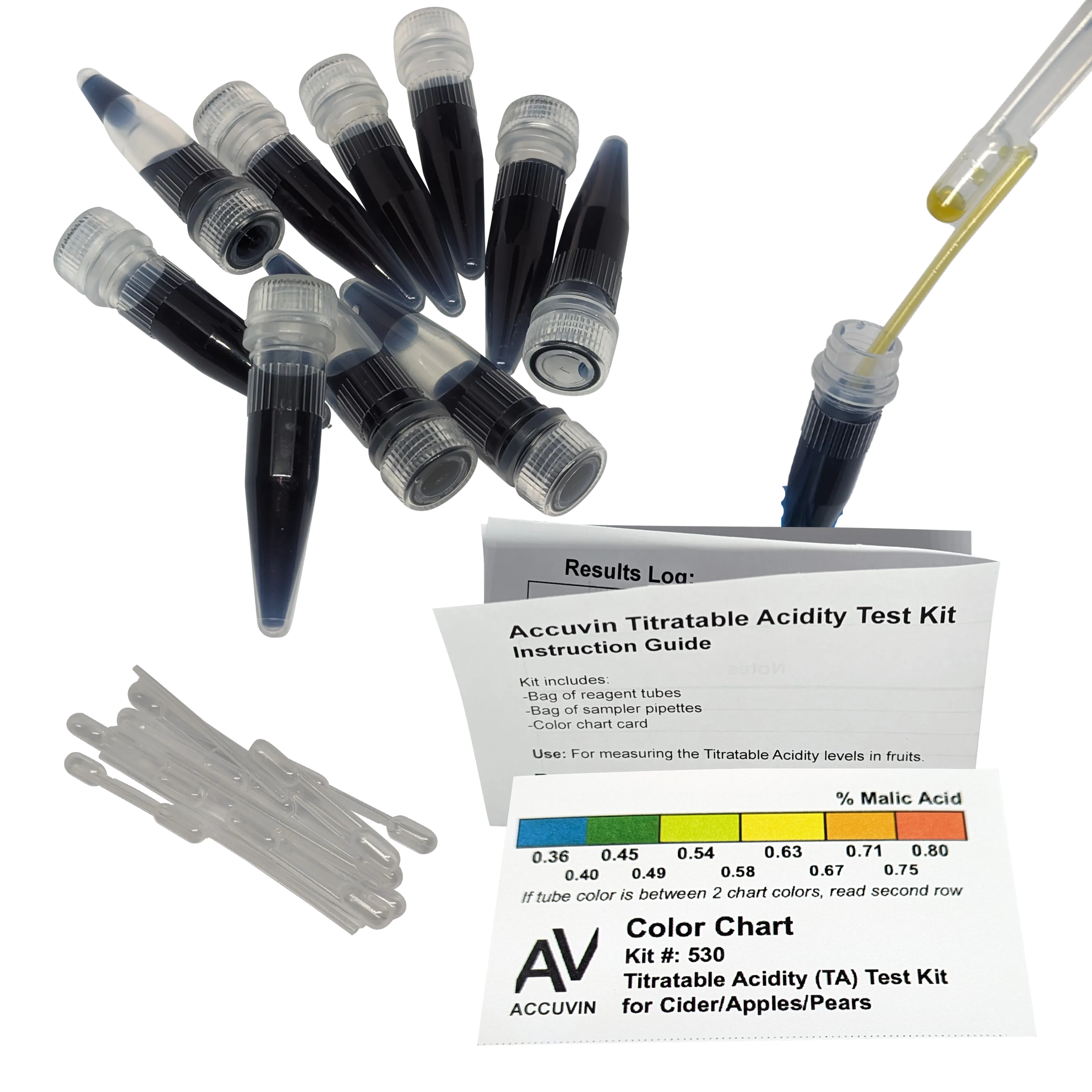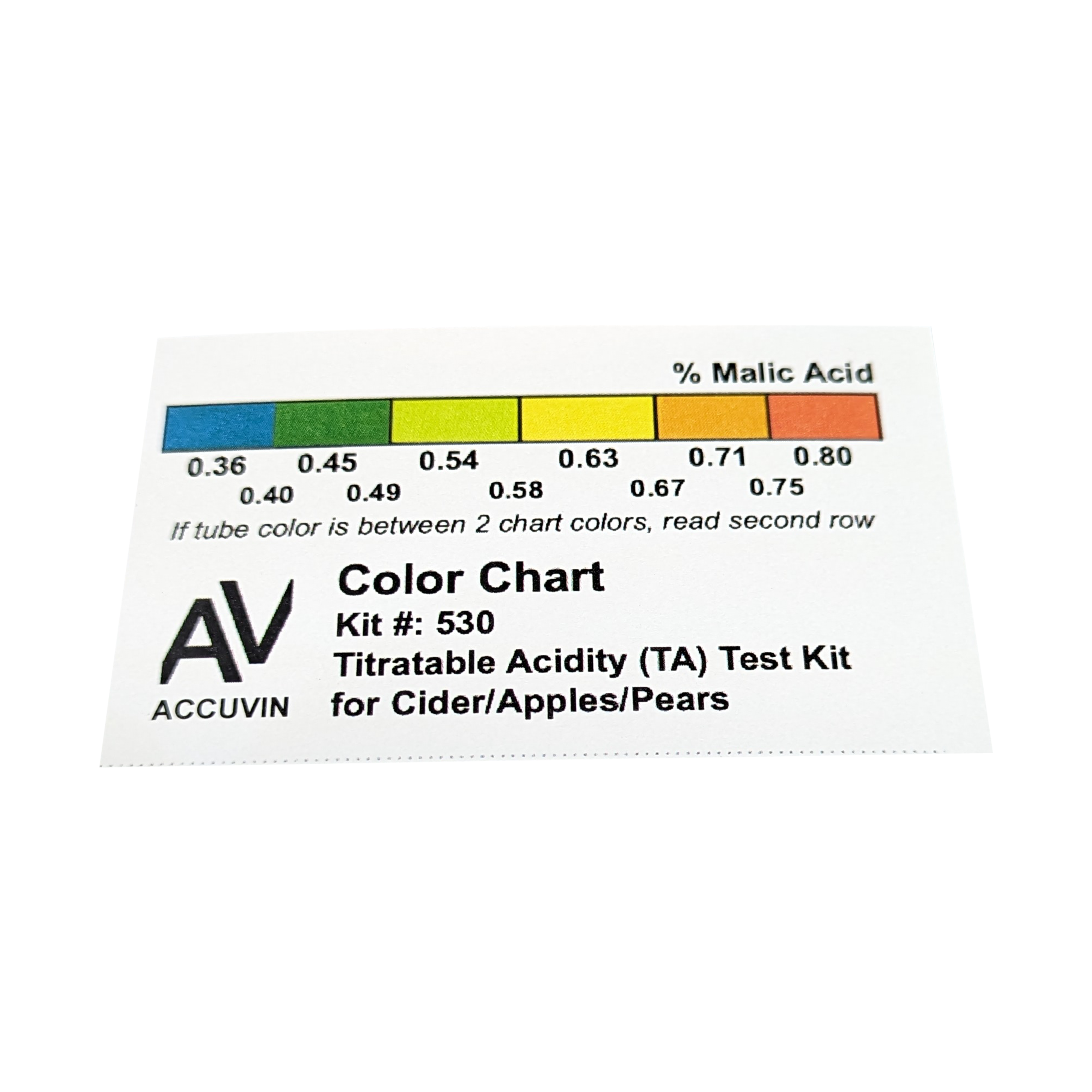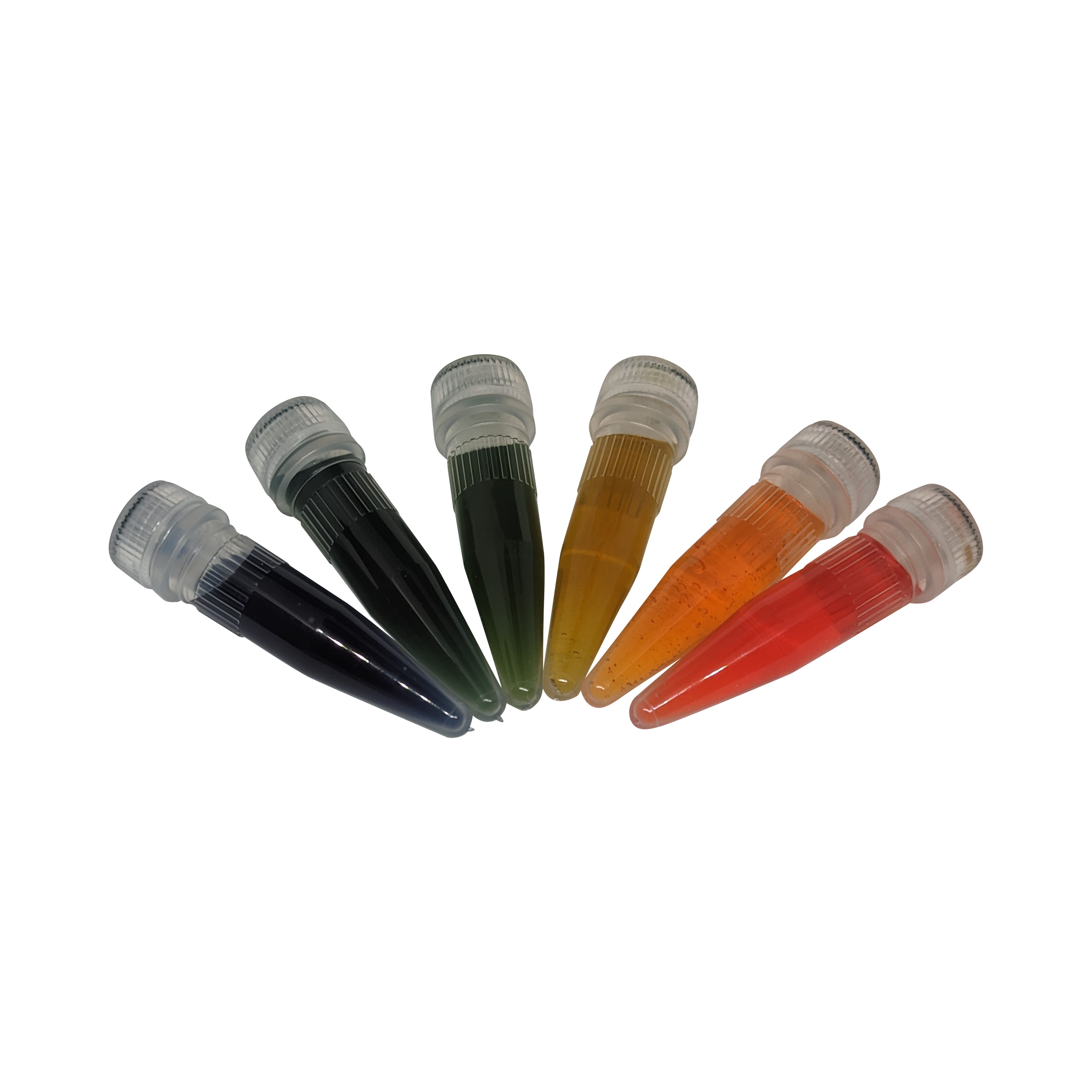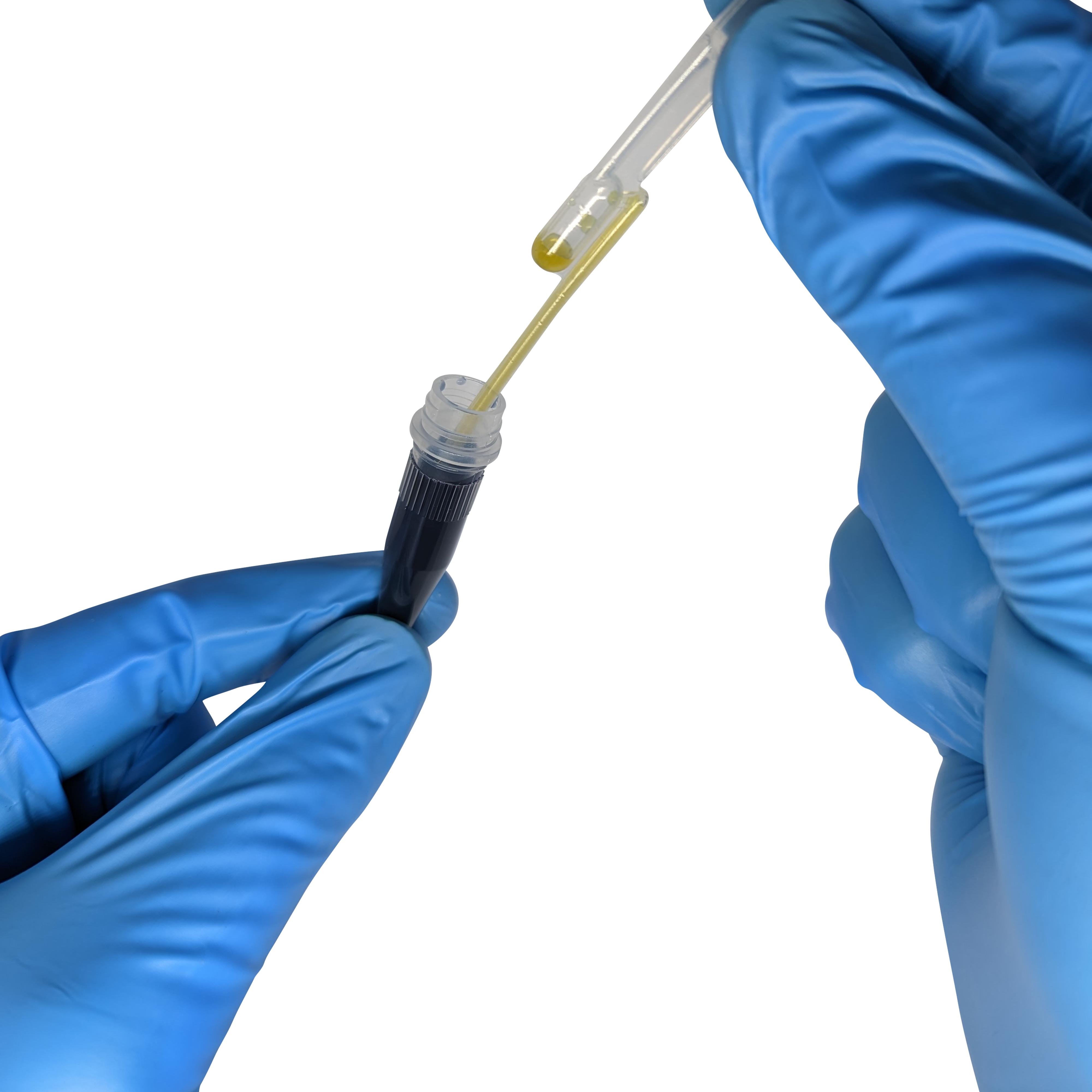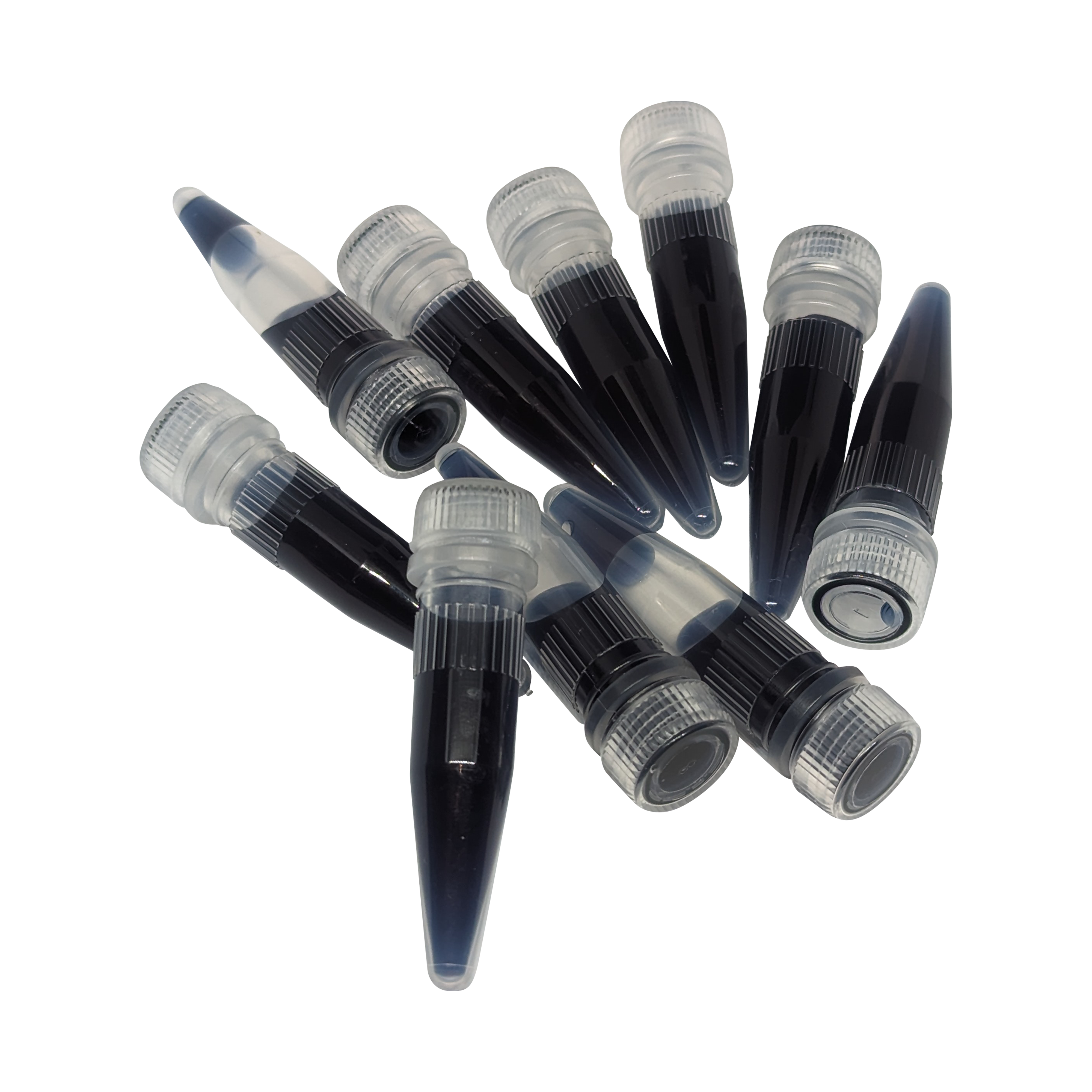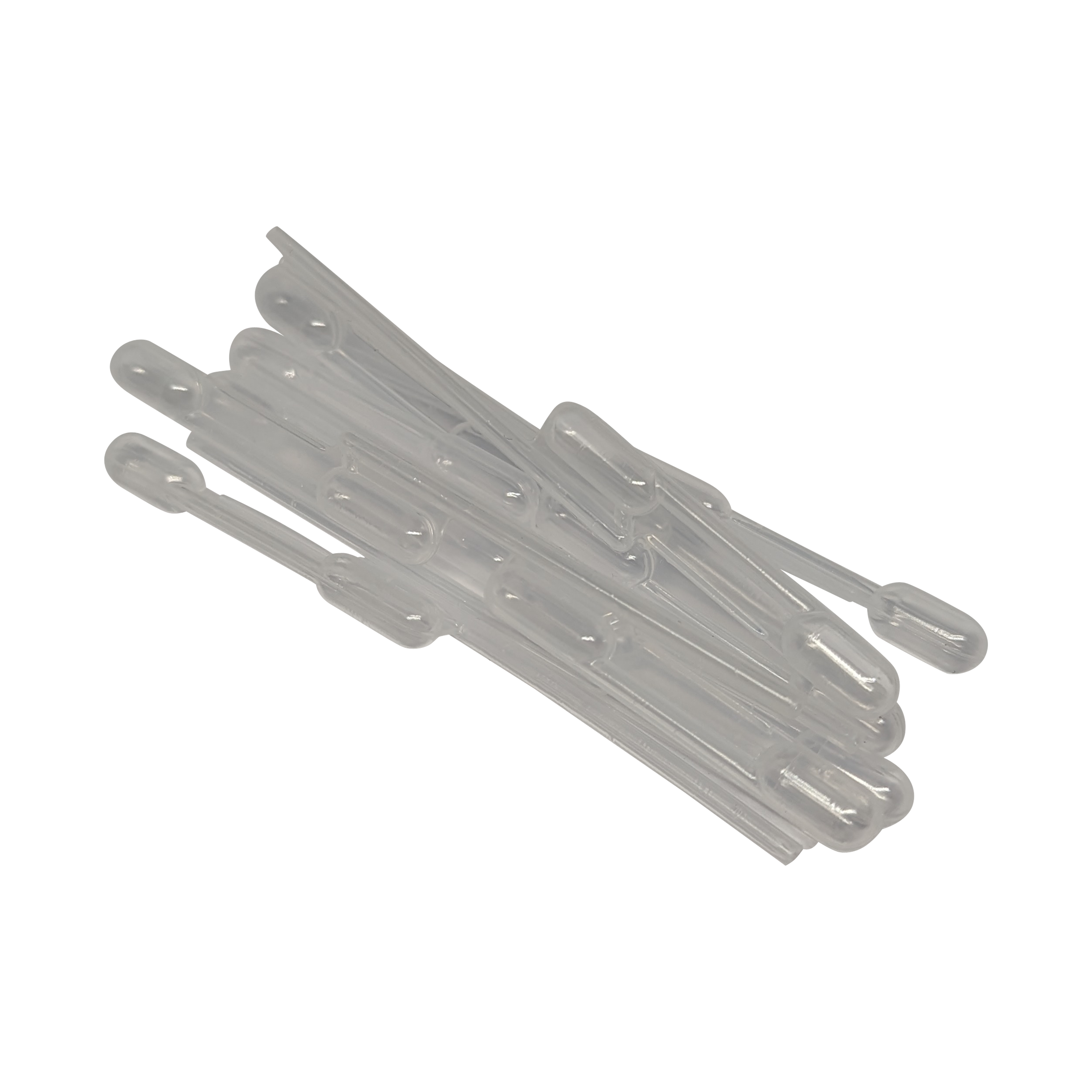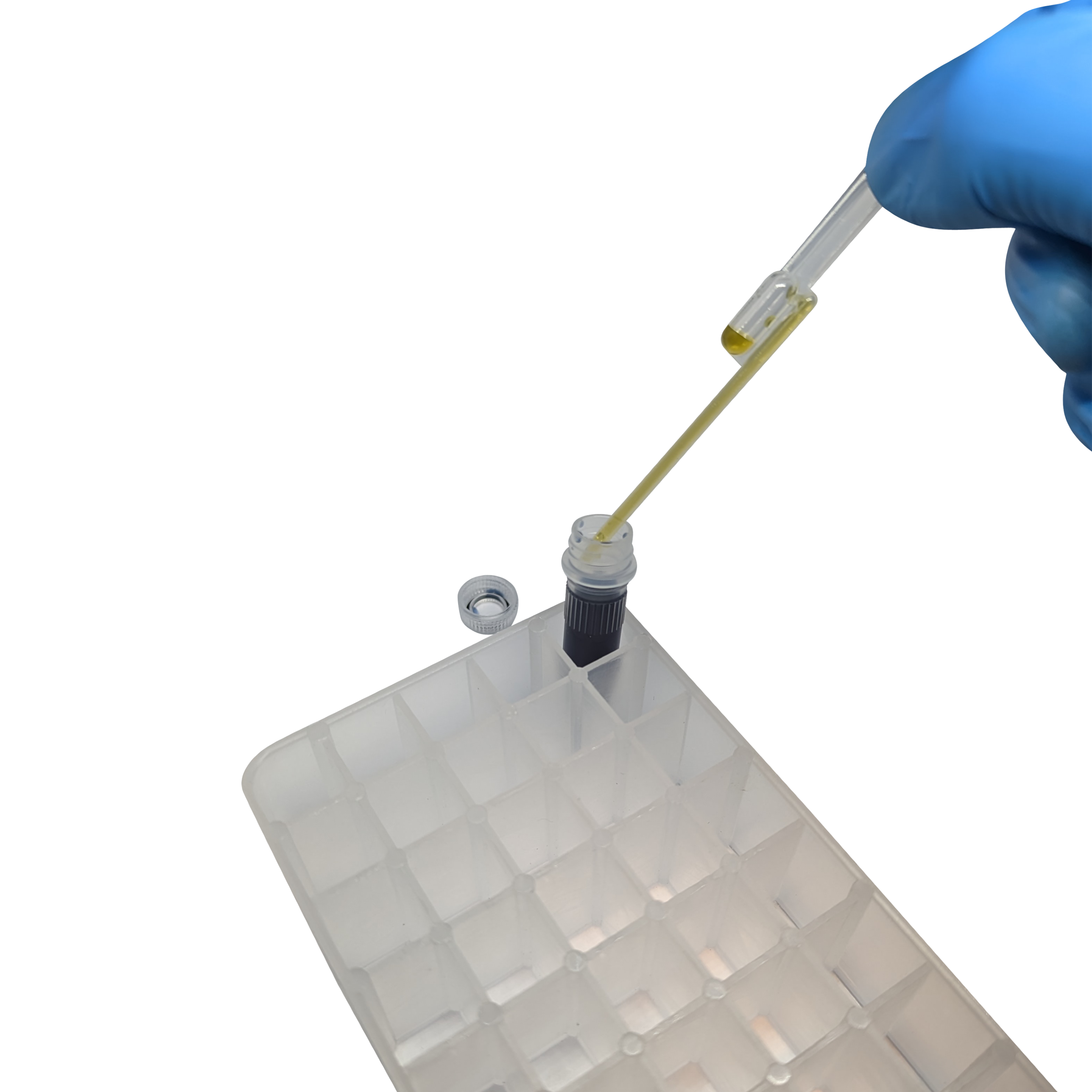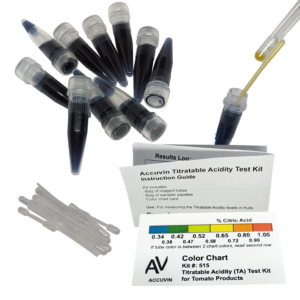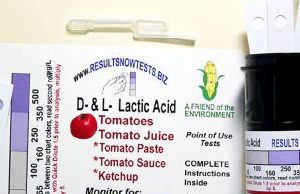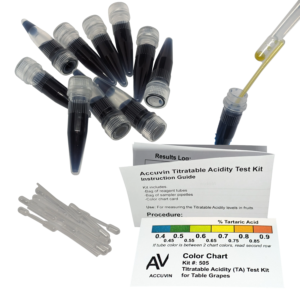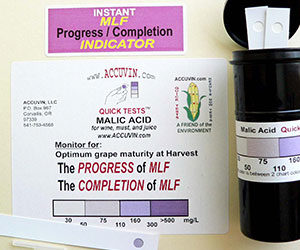Description
The test range is from 0.36-0.80 g/100 mL malic acid. Each test kit contains the number of tests and samplers that correspond to the kit size.
From an agricultural standpoint, knowing the titratable acidity (TA) of apples is imperative to informing harvest decisions and monitoring cold storage. As a result this has become commonplace amongst growers and Accuvin is proud to be an industry leader in these kinds of tests. Apple acidity and sugar (often reported as Total Soluble Solids) does vary between varieties. You can see our ‘harvest criteria chart’ for optimal levels of Malic Acid TA to % Brix: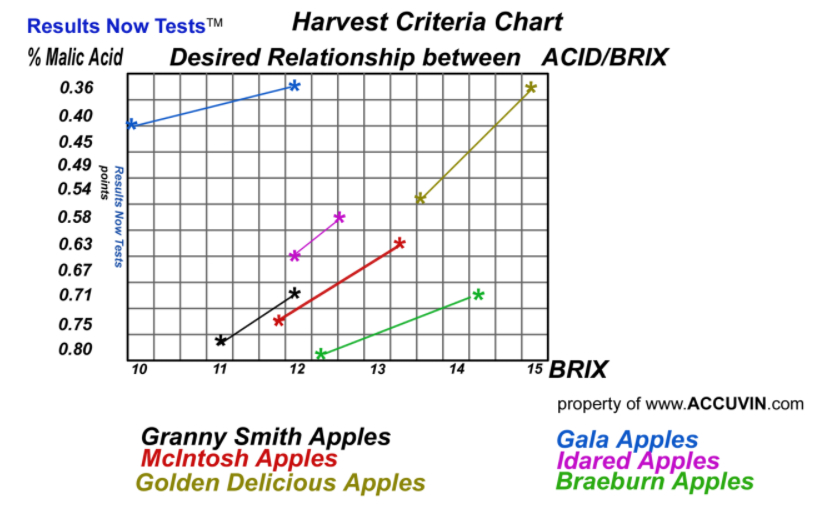
For all apple varieties there is an optimal TA level for harvest. Over time after harvest, acid levels decrease while sugars drift upward, even if the lot is properly stored. After roughly 150 days in storage, early, mid, and late harvested apples reach the same lower acidity levels.
You can read more about the different methodologies for testing TA in apples here, and about how our test is used by the Washington Tree Fruit Research Commission here. Information specific to Honeycrisp / Honeycrunch apples can be found here.
In addition to using these tests for agricultural analysis, they can be used to test the TA of ciders during alcoholic fermentation. The level of TA is important to know both before and after primary alcoholic fermentation in the production of hard ciders.
The acidity level before fermentation can affect the rate of alcoholic fermentation, the type of flavor components produced, and the likelihood of producing unfavorable flavors. The acidity level after fermentation affects the overall balance and acceptability of a cider.
The Hard Cider/Tart Apple Titratable Acidity test kit has a range of 5.4 – 9.8 g/L as malic acid.
The Cider/Apple/Pear Titratable Acidity test kit has a range of 3.6 – 8.0 g/L as malic acid.
Reasons to use Accuvin Titratable Acidity (TA) test kits
- Tests can be run without instrumentation, equipment, or the need for delicate manipulations.
- Monitoring before alcoholic fermentation ensures the blend of apples used will be consistent with the type of cider desired.
- Monitoring before alcoholic fermentation allows for selection of yeasts appropriate for the desired flavor outcome.
- Monitoring before malolactic fermentation ensures a proper scheme for malolactic fermentation: no MLF, partial MLF or complete MLF.
- Monitoring after alcoholic fermentation ensures avoidance of “flabby” ciders.
- Monitoring after alcoholic fermentation ensures proper levels for the style of cider desired: 4.5 – 6.0 g/L for a European style tannic cider, 6.0 – 7.6 g/L for a dry, sparkling cider, higher for a semi-sweet to sweet style cider, and higher still for an “ice” cider.
